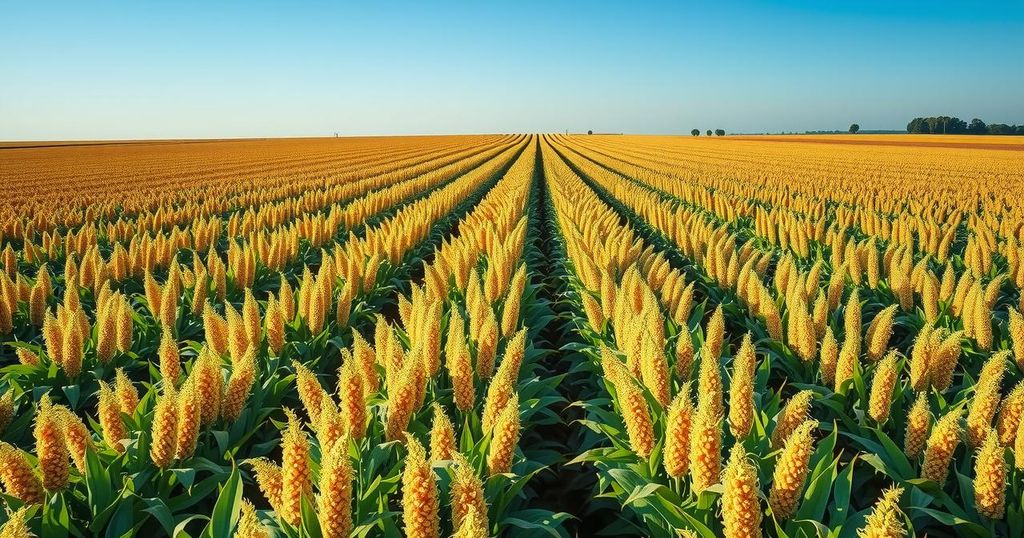This report analyzes sorghum production in Sudan for the 2024/25 growing season, focusing on key states. It highlights increased cultivated areas and a total production estimate of 2.65 million tons, despite challenges faced in the previous season. Gedaref, White Nile, and Kassala are identified as significant contributors to sorghum yields.
This report assesses sorghum production in selected states of Sudan for the 2024/25 growing season, specifically focusing on Gedaref, White Nile, Blue Nile, and the New Halfa irrigation scheme in Kassala. Sorghum, regarded as Sudan’s staple crop, can be stored effectively for over a year in underground pits known as Matmuras, making it a critical agricultural commodity. Through satellite data, the study first identified the sorghum cultivation areas, then correlated the peak normalized difference vegetation index (Peak-NDVI) with yield data from crop cuts, applying a regression model to estimate productivity.
Key findings reveal that crop conditions exceeded expectations despite challenges in the previous growing season. Specifically, the sorghum planted area in Gedaref showed a slight increase compared to 2023. Notably, areas in White Nile and Kassala were above average, while Blue Nile displayed below-average figures. In Kassala, an area estimate indicated the cultivation of 734,000 hectares. The average state-level productivity for rainfed sorghum in 2024/25 was approximately 0.9 tons per hectare. Overall, total sorghum production in Sudan is projected at 2.65 million tons, with contributions from each state specified as follows: Gedaref (1.57 million tons), White Nile (0.70 million tons), Blue Nile (0.31 million tons), and the New Halfa irrigation scheme in Kassala (0.07 million tons).
The sorghum production report highlights a positive outlook for the 2024/25 growing season in Sudan, with better-than-expected crop conditions and an increase in planted areas in most states. Key production estimates reveal a total projected output of 2.65 million tons, with substantial contributions from Gedaref, White Nile, and Kassala, underscoring the significance of sorghum as a staple for Sudan’s agricultural economy.
Original Source: www.cgiar.org




